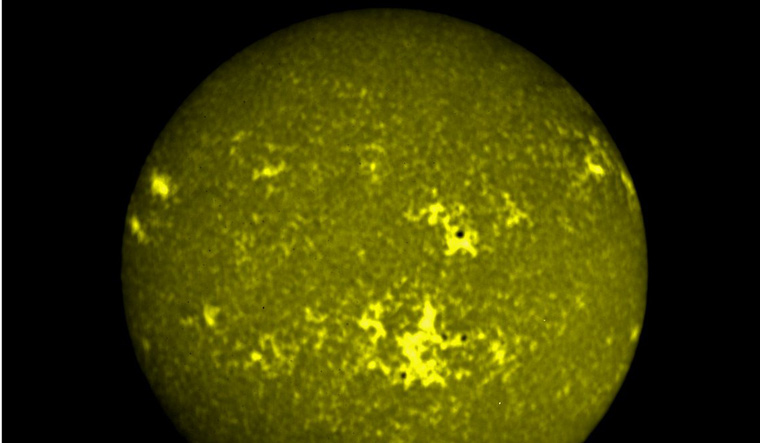The Aditya-L1 captured first-ever full disk images of the Sun on Friday. ISRO has released the pictures saying that the image include the "full-disk representations of the Sun in wavelengths ranging from 200 to 400 nm."
The photos-in near ultraviolet wavelengths "provide pioneering insights into the intricate details of the Sun's photosphere and chromosphere," ISRO posted on X.
Aditya-L1 Mission:
— ISRO (@isro) December 8, 2023
The SUIT payload captures full-disk images of the Sun in near ultraviolet wavelengths
The images include the first-ever full-disk representations of the Sun in wavelengths ranging from 200 to 400 nm.
They provide pioneering insights into the intricate details… pic.twitter.com/YBAYJ3YkUy
SUIT payload captures images of Sun's photosphere and chromosphere in this wavelengths range using various scientific filters.
Earlier, ISRO stated that Aditya Solar wind Particle Experiment (ASPEX) payload on the Aditya spacecraft had commenced operations, providing insights into the enigmatic nature of solar wind to enhance our understanding of space weather.
The Aditya-L1 Mission's goals encompass gaining comprehensive insights into the Sun's chromospheric and coronal heating, as well as the behaviour of partially ionized plasma. With seven distinct payloads, the mission is engineered to explore various layers of the Sun, including the outermost layer, providing real-time data on the coronal layer.
The SUIT payload was powered on November 20, 2023. Aditya-L1 is the first space-based observatory to study the Sun from a halo orbit around first earth Lagrangian point (L1), which is located roughly 1.5 million km from Earth. The spacecraft was launched in September 2 from Sriharikota.



